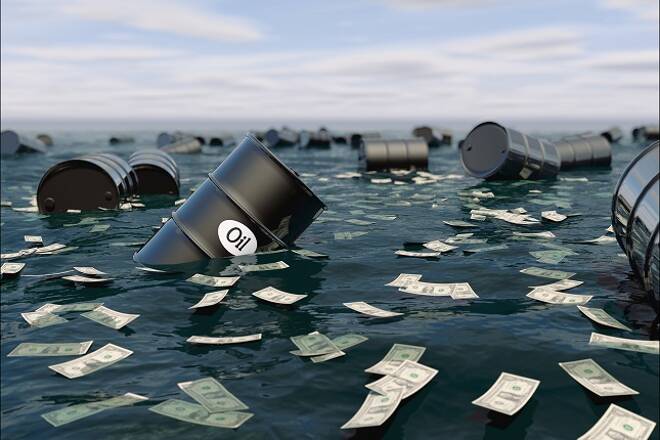Advertisement
Advertisement
Oil Price Fundamental Daily Forecast – More Near-Term Weakness Likely Until Crude Finds the Value Zone
By:
Prices are likely to remain under pressure and gains likely capped until WTI and Brent futures hit a value area.
U.S. West Texas Intermediate and International-benchmark Brent crude oil futures are trading nearly flat on Tuesday following yesterday’s steep sell-off. The heavy selling pressure seems to have subsided overnight as traders looked to a tight physical market to offset some concerns about the impact on demand from a surge in COVID-19 infections and higher OPEC+ supply.
At 09:55 GMT, September WTI crude oil futures are trading $66.35, unchanged and September Brent crude oil is at $68.72, up $0.10 or +0.15%.
Despite the size of Monday’s sell-off, the some of the move was actually structured and orderly. OPEC+ agreed to increase production and prices went down. There was nothing dramatic about the move. There were no surprises. It was pure supply and demand. The prospect of more supply lowered prices.
Some of the selling was fueled by concerns over future demand as traders begin to price in the possibility of a slowdown in the global economy due to another coronavirus outbreak. This move was part of the volatility because it represents uncertainty. When there’s uncertainty, longs liquidate, speculators get short, and sell-stops get it.
Some of the selling pressure was fueled by the dumping of other assets like stocks. When stocks unexpectedly plunge more than expected, some hedge funds get margin calls. In order to pay the margin call, some needed to sell profitable positions in crude oil to raise the cash. This “extra” selling may have contributed to the otherwise normal correction.
So before you get into panic mode, take the time to breakdown what is going on in the marketplace.
The supply portion is a known. OPEC+ told us how much they are going to raise output and when they are going to do it. Given those figures, professional crude oil traders made their price adjustments.
The demand part of the equation is an unknown. Prior to the new COVID breakouts, OPEC, the IEA and the EIA were predicting rising demand as the global economy recovered from the pandemic. Now that infections are rising again and no one is certain where the end is, it’s difficult to predict exactly where demand will stand at the end of the year, for example. Rather than try to guess, some traders feel the best thing to do is liquidate and reenter later at lower prices.
Late last week, Goldman Sachs cut its 2021 growth forecasts for several major Southeast Asian economies due to surging COVID-19 infections. Renewed virus surges and tighter restrictions are likely to “weigh significantly more” on growth in the second half of 2021 than previously thought, the economists said.
Daily Forecast
Prices are likely to remain under pressure and gains likely capped until WTI and Brent futures hit a value area. At this time, traders are trying to figure out where the value is. Using OPEC+’s new supply numbers, they probably have an idea where that is, but given the rising COVID numbers, this value area may be too high as investors try to ascertain the extent of the damage to demand. This is the reason why traders are likely to sell rallies over the near-term.
We’ll likely know where supply and demand balance when WTI and Brent start to build a support base.
For a look at all of today’s economic events, check out our economic calendar.
About the Author
James Hyerczykauthor
James Hyerczyk is a U.S. based seasoned technical analyst and educator with over 40 years of experience in market analysis and trading, specializing in chart patterns and price movement. He is the author of two books on technical analysis and has a background in both futures and stock markets.
Advertisement
